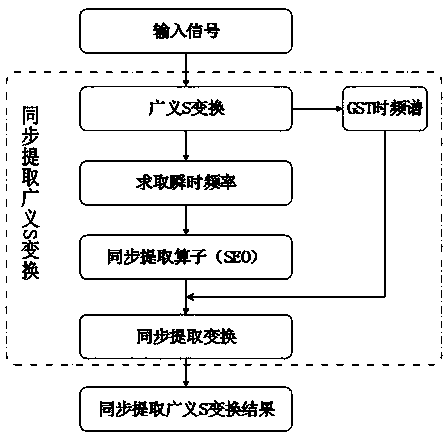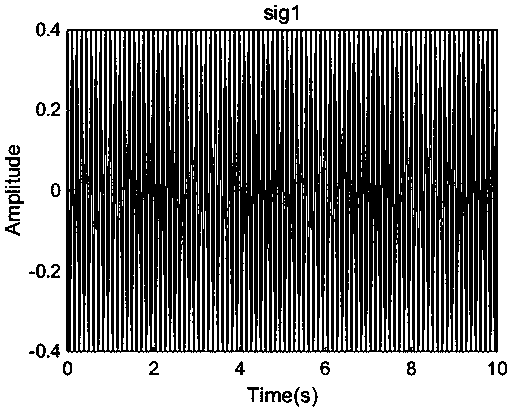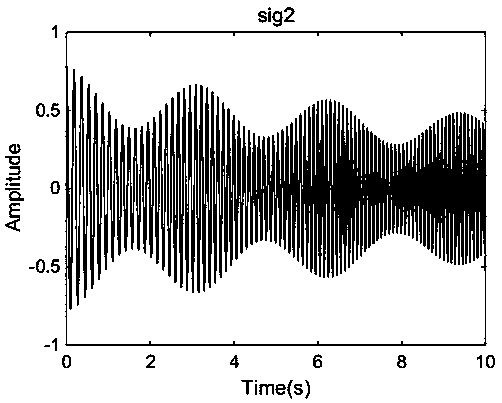High-precision synchronous extraction generalized S transform time frequency analysis method
A high-precision synchronization and synchronization extraction technology, applied in the field of signal processing, can solve the problems of limited signal fine analysis, inability to adjust the length of the time window, difficult resolution, etc., and achieve the effect of high time-frequency decomposition accuracy
- Summary
- Abstract
- Description
- Claims
- Application Information
AI Technical Summary
Problems solved by technology
Method used
Image
Examples
Embodiment 1
[0038] Embodiment 1: see figure 1 , a high-precision synchronous extraction generalized S-transform time-frequency analysis method, comprising the following steps:
[0039] (1) Acquire signal x(t);
[0040] (2) Perform generalized S-transform on the signal x(t) according to the following formula to obtain the generalized S-transform value GST(f,τ),
[0041]
[0042] Among them, f is the frequency, t is the time, τ is the displacement parameter of the time axis, i is the imaginary number unit, λ and p are the adjustment factors of the window function;
[0043] (3) Calculate the modulus of GST(f,τ), get the energy of each time-frequency point, and get the time spectrum S of the generalized S-transform GST =|GST(f,τ)|;
[0044] (4) According to GST(f,τ), the instantaneous frequency f of the signal x(t) is obtained x (f,τ), and according to f x (f,τ) calculates the synchronous extraction operator SEO,
[0045] SEO=δ(f-f x (f,τ))
[0046]
[0047] (5) The time spectru...
Embodiment 2
[0053] Example 2: see Figure 2-Figure 9 , since the synthetic signal is a well-recognized model for testing the time-frequency focusing performance of the time-frequency distribution, Figure 5 The synthesized signal shown is composed of figure 2 , image 3 and Figure 4 The component signals are superimposed, so next we will Figure 5 The synthesized signal shown is used as the signal x(t) in step (1), and the specific implementation is as follows:
[0054] (1) Acquire signal x(t), said x(t) is determined by figure 2 , image 3 and Figure 4 The component signals are superimposed;
[0055] (2) Perform generalized S-transform on the signal x(t) according to the following formula to obtain the result of generalized S-transform GST(f,τ),
[0056]
[0057] Among them, f is the frequency, t is the time, τ is the displacement parameter of the time axis, i is the imaginary number unit, λ and p are the adjustment factors of the window function;
[0058] (3) Calculate t...
PUM
 Login to View More
Login to View More Abstract
Description
Claims
Application Information
 Login to View More
Login to View More - R&D
- Intellectual Property
- Life Sciences
- Materials
- Tech Scout
- Unparalleled Data Quality
- Higher Quality Content
- 60% Fewer Hallucinations
Browse by: Latest US Patents, China's latest patents, Technical Efficacy Thesaurus, Application Domain, Technology Topic, Popular Technical Reports.
© 2025 PatSnap. All rights reserved.Legal|Privacy policy|Modern Slavery Act Transparency Statement|Sitemap|About US| Contact US: help@patsnap.com



